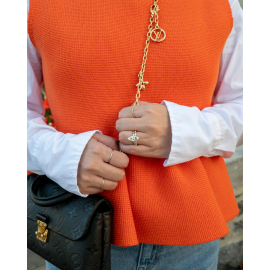Price match guarantee

We’ve teamed up with Klarna to provide flexible payment options, allowing you to shop the way you want. With Klarna, you can split your payment into 3 instalments or choose to pay later, making your shopping experience smoother and more convenient. Your order total must be between £100 and £499 to qualify.

We’ve teamed up with Klarna to provide flexible payment options, allowing you to shop the way you want. With Klarna, you can split your payment into 3 instalments or choose to pay later, making your shopping experience smoother and more convenient. Your order total must be between £100 and £499 to qualify.

September 25, 2020 | by Admin
It is law within the UK that every item of precious metal sold such as Platinum, Gold, Silver is stamped labelling the item with the type of metal it is. Platinum pieces which weigh less than 0.5 grams, 18ct Gold and Palladium pieces weighing less than 1.0 gram and Silver pieces weighing less than 7.78 grams are except from hallmark.
At Diamonds Factory all our products are hallmarked as per UK hallmarking law from London Assay Office (The GoldSmith Company)
The Goldsmiths' Company Assay Office is the oldest assay office in the United Kingdom. It has provided hallmarking services since The Goldsmiths' Company was founded in the 1300s. The company received its royal charter in 1327 and ranks 5th in order of precedence of the 12 Great Livery Companies of the City of London.
Hallmarking dates back to the 1300s when Edward I of England passed a law requiring any item made of silver, which was offered for sale, to be at least of equal quality as that of the coin of the realm (silver currency). The wardens of The Goldsmiths' Company were tasked with visiting workshops in the City of London to assay (test) silver articles. If these articles were found to be below standard they were originally destroyed and the metal forfeited to the King. If they passed, each article received the King's mark of authentication - the mark of a leopard's head. By 1478, there were several hundred workshops and merchants manufacturing silver articles in the City of London. It was not possible for the wardens to visit them all so the merchants were ordered to bring their items to Goldsmiths' Hall for testing and marking and a permanent Assay Office was established in the building. This is the origin of the term hallmark - struck with the King's mark at Goldsmiths' Hall.
In 1544 the Goldsmith's Company adopted the King's mark as their town mark and the mark of the leopard's head is now internationally recognised as the mark of this assay office.
The Goldsmiths's Company Assay Office is still based at Goldsmiths's Hall and remains the oldest company in Britain to be continually trading from the same site. However, it also has two satellite offices; at Greville Street in Hatton Garden in the heart of the London jewellery quarter and within a high security complex near London's Heathrow airport. It now has a new off-site facility within the Dalston-based jewellery manufacturer, Allied Gold. This is the first time in the Assay Office's 700 year history that it has opened permanent hallmarking services on a customer's premises.
In addition to hallmarking, the office has now expanded its range of services to support the jewellery trade and enforcement authorities. It offers a variety of specialist analytical services including nickel, lead & cadmium testing, antique silver dating, non-destructive compositional analysis, plating thickness measurement and a melt and assay service for scrap precious metal carried out in their fully independent on-site laboratory. Other services offered are a jewellery valuation service, laser marking, trading standards assistance, high quality photography and a comprehensive range of training and educational seminars, lectures and specialist events.






There are hundreds of engagement traditions in the UK, from how much the ring should cost and who should pay for the ring, to who should propose and whose permission should be asked. But, in these modern times, a lot of these traditions are being thrown out the window for more realistic and equal options.
We surveyed over 2300 people to find out just who are debunking these traditions and how many in the UK are still following the old beloved rules.
Does the 3-month salary rule still apply to engagement rings?
The 3-month salary rule has been a long-standing tradition which originated in America in the 1930s. It actually started out as a marketing ploy by De Beers, to get more people to buy diamond rings as businesses struggled during the Great Depression. As part of their campaign, they suggested that 1 months salary was an appropriate amount to spend on an engagement ring. The campaign was a huge success and the rule stuck. It wasn’t until the 1980s where the rule increased to 2 months and then, later, 3 months.
Out of the people we surveyed, we discovered that more than ⅔’s (68%) of the UK think that spending 3 full months of their salary on a diamond engagement ring for their partner is too much. But, more than 1 in 4 people still think that the 3-month rule is about right. Which means, based on the average national UK yearly salary, 28% of people believe they should be spending around £7650 on a diamond ring.
How do the recently engaged feel about the 3-month rule?
Interestingly, we learned from our research that of those who have recently got engaged within the last year, ¾ of them think their engagement ring should cost less than the traditional 3-month salary rule, and nearly 4 in 5 (79%) of proposers also think it should have been less.
How do singletons feel about the 3-month rule?
On the other hand, singletons have very different opinions compared to the newly engaged. In fact, ⅓ of people who aren’t engaged yet but want to be proposed to expect someone to spend 3-months of their salary on a ring, which as we established earlier, would be about £7650. With these high expectations will people be disappointed when they learn that the average cost for an engagement ring is £1865?
What do each region think about the 3-month rule for engagement rings?
Out of the 2307 people we surveyed in the UK we learned that each region holds different views on this traditional rule. Here are the regions where the majority think the 3-month rule is too much:
• 79% of Wales
• 74% of South West
• 72% of Yorkshire
• 71% of Midlands, and East of England
• 70% of North West
• 68% of South East
• 63% of Scotland
• 60% of London
And here are very few regions who believe the rule is about right:
• 38% of NI
• 37% of London
• 35% of Scotland
These results show that ¾ of Welsh people think that £6995, which is the average 3-month salary for them, is too much to pay for an engagement ring. However, 37% of Londoners are happy to pay over £9000 on average for a ring, 38% of Northern Irish people are happy to pay £5000 for a ring and 35% of Scots are happy to pay over £7800 for a ring.
What percentage of Men and Women think that the 3-month rule is too much?
Wondering if men and women see the 3-month rule differently? Well, it may surprise you to learn that they don’t. We found it very interesting when our results showed that 69% of both men and women think that spending 3-months salary on a diamond engagement ring for their partner is too much. Only 1 in 4 men and women actually think a 3-month salary is an appropriate amount for a ring.
Who should buy the engagement ring?
Tradition dictates men are the ones who buy the engagement ring and propose to their partners. This dates back to the Stone Age as marriage was seen as a way to build alliances, joining two families together to improve businesses and carry on the family line. Back then, the two families would negotiate a deal to marry off a woman in exchange for lands, property, social positioning and more.
While, thankfully, marriage is now something people do out of love rather than a necessity, it’s still a very common tradition for the man to buy the ring and propose, except of course on a Leap Year. Thanks to an old Irish tradition from the 5th century, when women would complain to St. Patrick that they had to wait too long for men to propose, St. Patrick deemed it acceptable for women to propose to their partners on February 29th.
Who do we expect to pay for the engagement ring, and who actually does?
Our survey data shows that even now, in 2020, tradition still remains strong, with 91% of women and 94% of men thinking that the person proposing should pay for the ring. And, out of all the people we asked, it seems millennials (25-39) stick with this tradition the most.
Should the engagement ring cost be shared?
Many people these days are considering the idea of sharing the cost of an engagement ring to make it a more manageable financial commitment. 8% of people think the costs should be shared with twice as many women believing in this option than men. However, only 4% of people actually did share the costs.
Do people buy their own engagement rings?
In a surge of independence 11% of millennials are taking it upon themselves to buy their own engagement rings. This could be down to many reasons. Some women may have wanted full control of the ring and had a very specific style in mind. Some may have felt it was important to start the marriage as complete equals. Others find buying their own ring empowering. While some may simply have wanted to debunk this old tradition.
Want to learn more about the costs of engagement rings? Take a look at The Engagement Ring Cost Report 2020.
If you’re looking to propose with a ring that’s a little different, check out these 6 Types Of Precious Stones For Engagement Rings.